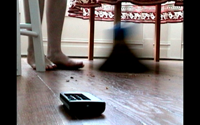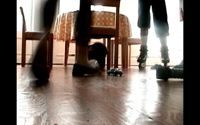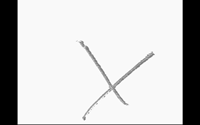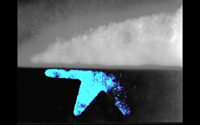
Festival Dates: Thursday July 15-Friday July 16, 2010
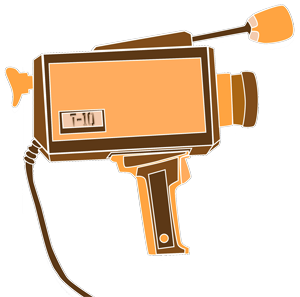
21 Grand and Killer Banshee Studios present:
The 10th Annual T-10 Video Festival
two nights celebrating short videos
| July 15 & 16, 2010 Doors 8.00pm Screening 8.30pm $7 |
21 Grand 416 25th St. at Broadway Oakland |
|
Thursday featured artists: |
| Thursday, July
15 (see bios) |
Descriptions are currently in alphabetic order by artist name. Order will change to play order when it is set. |
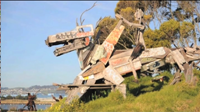 |
AACE - The Bulb |
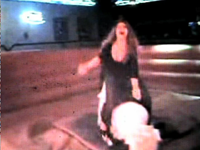 |
Both works were created scrambling
the frames of video in random & semi-random ways. The works
investigate the use of time in video, especially in documentary
web-based works. |
 |
Source material is a found footage super8 film.
The visual carrier was attacked in a multitude of ways. It was scratched,
cut open and violated. I captured an attempt to screen it. There
it burned and was destroyed by the projector. Sorry little film.
With the video footage I provoked the encoding. As a result some
pixels were dislocated. In the end I reshot the film from the monitor
while I somehow angered the cables that connect the monitor with
my computer. That all may sound very negative and destructive to
you dear reader but the goal was an almost humanist one: Unification
of the digital with the analogue world. They seem so far apart and
yet they aren't. By exposing every material's weaknesses and injuries
it was made one. It's all visual sensations in the end. |
 |
Set in an authoritarian world where music is not allowe, this is the story of Five strangers thrown together & forced into silent slavery. They must band together & inspire eachother to break free. |
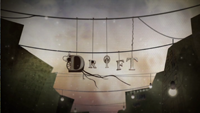 |
Makiko Fukaya - Drift Drift is motion imagery that illustrate the relationship between time & emotion. Time commands & regulate people w/ infinite force. It causes lifeless people to have desive to escape from situation but that emotion is in turn washed away also by time. |
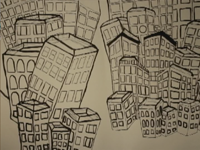 |
Lee Hunter - Resonant City Resonant City is a hand-painted meditative animated
short that explores the idea of growth. From the city to the forest
and back, this animation project attempts to investigate the growth
of a city. The piece was painted on with black & white mural
paint on a large sheet of printmaking paper; show with a digital
SLR and assembled in an animation program. |
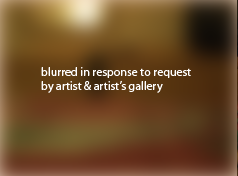 |
 |
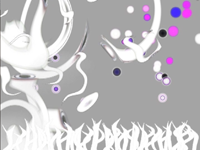 |
An abstract animation about life. The evolution of sperm into humans and then ghosts. |
Michael Mantra - Pixel Dub Pixel Dub is a music video created for a track from
the album Quantum Joy by Rod Modell (DeepChord Records of Detroit)
and Michael Mantra. Quantum Joy is Rod and Michael’s 5th project
together. Pixel Dub was created with Adobe Photoshop, Flash and After
Effects to explore damaging pixels and warping the time/space continuum. |
|
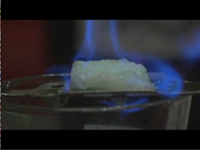 |
Pinky Out Productions - Yesterday's Tomorrows An offbeat humorous, experimental documentary
on absinthe. |
 |
Angela Rodriguez - Dream of Murder Angela Rodriguez is a student in Downey,
CA. She is heavily influenced by both literature & films. She
spends hours watching the shots that were used to communicate
the important points in Three Stooges, Charlie Chaplin, Laurel
& Hardy and Hitchcock films. Her study of shots, lights
and effects led her to Film & TV Production classes. She's currently
considering focusing her interests towards script writing. |
 |
V.K. Shah - Welcome to Shady Pines A timely mockumentary about the American
housing industry funded by my 2008 Federal tax rebate. Welcome
To Shady Pines is a short video by Estelle Getty, real estate
agent for the up and coming neighborhood Shady Pines. Estelle
takes us on a tour to meet her fabulous residents and see how
great life is in Shady Pines. Estelle’s sells more than
houses, she sells dreams. Estelle doesn’t discriminate either,
even if you don’t have credit, a job, collateral, or a down
payment, she will find a home for you! |
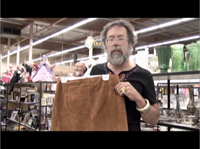 |
THRIFT TOWN: GET USED, Stevens second film, is a celebration of a beloved Bay Area Thrift Store and a look inside the thrift culture showing how shopping second-hand can be so much more than just a good deal. This film features local San Francisco band, La Plebe! She is excited to share this film with the world. This film was screened at the San Francisco Doc Fest in 2010 and won first place in the Indie Roar Online Film Competition in 2010. |
Featured Artist: Lynn Marie Kirby Time DilationsStudy in Choreography for Camera Remote Latent Light Excavations 2003-2010 Karate Class Exposure Part 1: The Space Itself (silent), Part 3: Second Star Kata, Part 2: Points of Contact Requiescat Listening to Letters Time Dilations, 1999 - 2003 Photons in Paris: image encoding 3, and 4 are part of a larger series of Photon pieces from the Time Dilations, these take place in the home. These videos play with the material space between the pixel break up and the parquet pattern on the floor. These are improvisations, with my son and the digital equipment, light and paper, through live editing. Study in Choreography for Camera Remote In 2000 when we returned to the Bay Area I began a year-long project
in which I recorded my daily sweeping after breakfast, this is a seven
day excerpt. I think of this piece as a collaboration across time with
Maya Daren and her film, Study in Choreography for Camera from 1945.
I too am thinking about the space of dance, movement and time. I used
the camera remote and the record deck remote to dance with the daily
material. For this series, I use a hybrid process, employing both 16mm film and
digitization systems to excavate the invisible history of American landscapes
and to reconsider and make visible media technology, here the transfer
process of film to digital. I exposed, 16mm raw film stock without a
camera. This exposure encodes on the film both the The material aspects of the film source medium are revealed through usually hidden, unintended and unwanted artifacts: dust, scratches, hole punches, head and tail leader information. Uniquely digital artifacts, similarly usually unwanted in the transfer process are also introduced. These American sites are chosen for their complex histories. The sites of exposure may have a personal history or intersect my interest in the American vernacular and history, and the history of cinema and media making. The works function at times as memorial gestures or homages and at times as celebrations or critiques. This series eventually expanded to include exposures at international sites, including Lebanon, Rwanda and the Jordan staircase in St. Petersburg among others. Karate Class Exposure: three variations (silent/ sound) First made as part of an evening of video and performance with Harrell Fletcher, who had been a student at CCA, my son James and his karate teacher. The material was gathered at my son’s karate school. The video it is comprised of three sections. Part 1: the space itself (silent) and Part 3: second star kata (sound) Part 2: Points of Contact (sound) (Motion Studies after Muybridge) Requiescat Requiescat, a prayer or a wish for the repose of a person, here for a person killed in Iraq. I scratched into a 100 Ft roll of film an “X” for a person killed in Iraq. I scratched until the roll was filled. In transferring the film to digital video I again thought of those killed in Iraq. This time I was not etching an "X" into the film emulsion for each death, but punching the transfer machine each time I saw an "X" pass in real time, changing the “X” from positive to negative. This new gesture marks each death anew with a skip or glitch in the transfer process. Listening to Letters Listening. It brings quiet into the frenetic noise of our time by pausing to focus on what we hear In 2009 I began a listening practice, paying attention to the sounds of sites. Not wanting to use sound recording technology or make field recordings, I began by taking sound notes as a way of being attentive to encounters that resonate through the audible. I started by listening carefully to the day. I listened to each hour of the day for a week until, after twenty-four weeks, all twenty-four hours were carefully paid attention to. I listened to the alphabet, the history of the sounds of vowels and consonants, how these sounds became marks then letters. Using the frame of a workday to structure listing in a domestic space, I listened in a house for eight-hours. I invited a friend to listen with me. We took our listening notes and performed them with an American Sign Language interpreter in the home where we had originally listened and created another moment of listening. Listening continued in Art in Storefronts, the 24th Street Promenade sponsored by Triple Base Gallery and the City of San Francisco. After listening myself, I invited the public to listen with me in sites along 24th Street: the 7th Day Adventist Church, the Alcoholics Anonymous Meeting House, Center Nail Salon, the Brava Theater, St Francis Fountain and Garfield Park. Together we took notes. I put the listening notes from these sites into the forms found at the original sites: church programs, pamphlets, price lists, theater announcements, menus, and park signs. I also made documents of the listening experience for each of the listeners. I was recently was part of the San Francisco/ Shanghai Sister City Exchange, I traveled to Shanghai to listen. Once in Shanghai I asked people I met to show me their city and to listen with me. We listened together at thirteen sites: in public parks, around tables in homes, in cafes and restaurants, to dance performances, during reflexology treatments and in schools. These listening documents were recently in a show in San Francisco and will travel to Shanghai. Tonight I will perform Listening to Letters with ASL interpreter Jesada Pua. |
Online
Festival Info
Artist bios
Thursday piece descriptions
Friday piece descriptions
Promo Materials
(poster/flyer/email)
Curators
Announcement
(selections)
For More Info:
510.444.7263
killerbanshee.com/t-10
21grand.org
